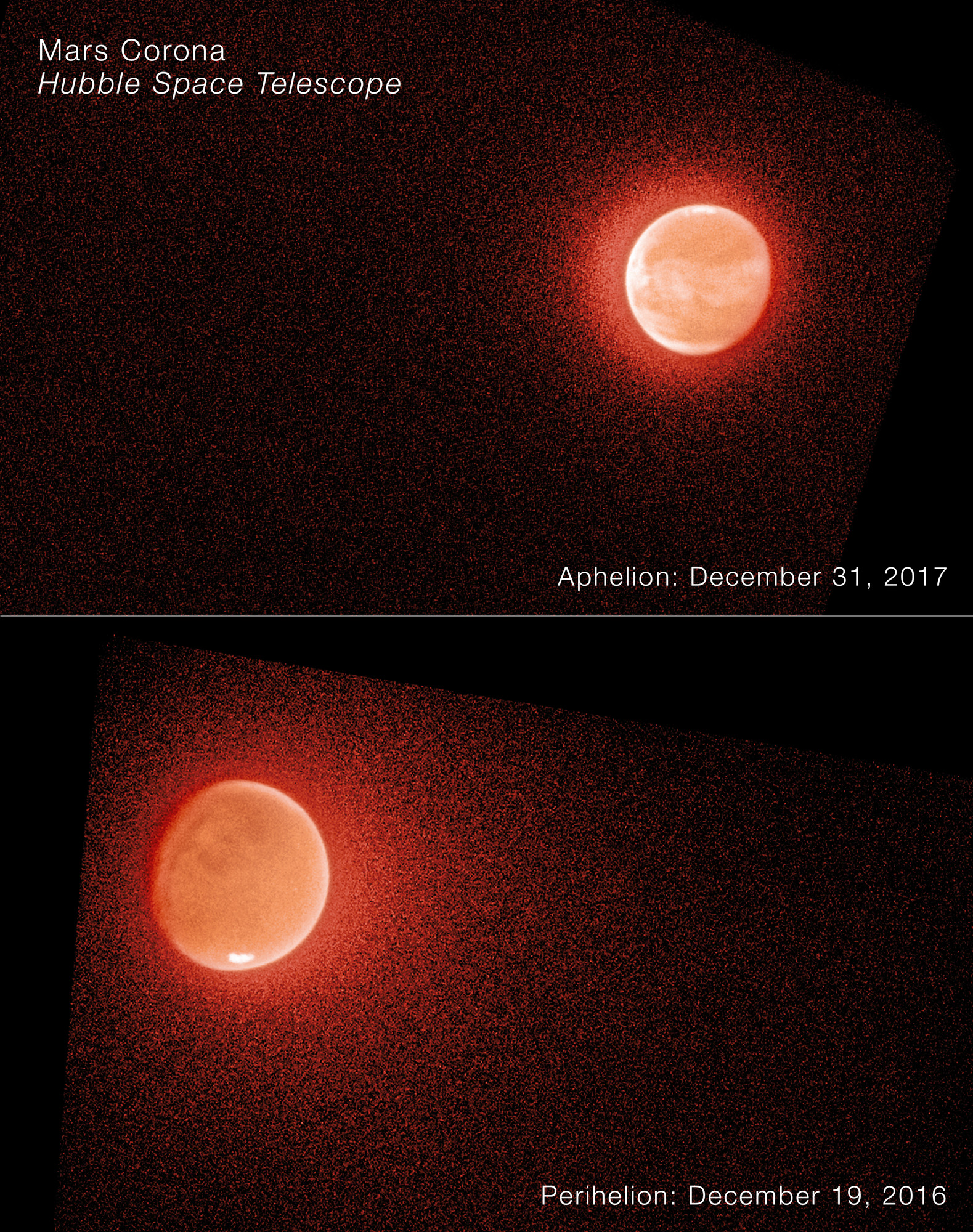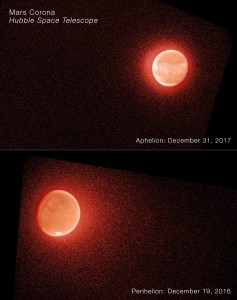
Hubble Captures a Corona Around Mars
These are far-ultraviolet Hubble images of Mars near its farthest point from the Sun, called aphelion, on December 31, 2017 (top), and near its closest approach to the Sun, called perihelion, on December 19, 2016 (bottom). The atmosphere is clearly brighter and more extended when Mars is close to the Sun. Reflected sunlight from Mars at these wavelengths shows scattering by atmospheric molecules and haze, while the polar ice caps and some surface features are also visible. Hubble and MAVEN showed that Martian atmospheric conditions change very quickly. When Mars is close to the Sun, water molecules rise very rapidly through the atmosphere, breaking apart and releasing atoms at high altitudes.
Image Credit: NASA, ESA, STScI, John T. Clarke (Boston University); Processing: Joseph DePasquale (STScI)
- X
https://science.nasa.gov/image-detail/hubble-maven-mars-annotated-stsci-01j6a1t00q0jdpwn14jyqxyr95/
Image CreditNASA, ESA, STScI, John T. Clarke (Boston University); Processing: Joseph DePasquale (STScI)
Size1024x1297px



























